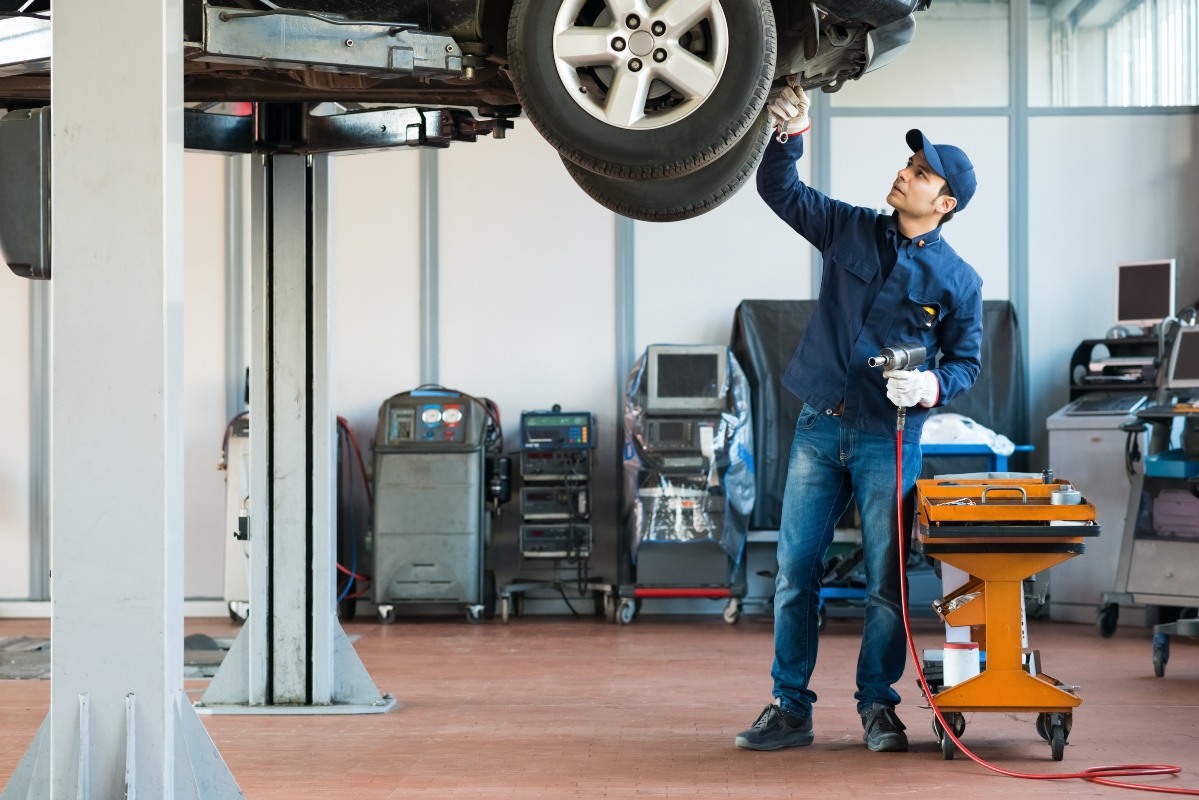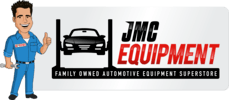Successful Operating: Car Lift Safety Do’s and Don'ts to Follow
Posted by Johnny Keys on 13th Aug 2021
To prevent being an accident, you must know the car lift safety do’s and don'ts and follow them. Vehicle lifts are a must-have piece of equipment in every auto repair shop. They let you raise cars completely off the ground so you can work on the undercarriage safely and comfortably. Mobile car lifts, however, require comprehensive safety training because they could be dangerous when operated improperly.
In fact, an auto mechanic sustained severe injuries after a vehicle lift fell on him in his repair shop. He was taken to the hospital, but he eventually passed away due to his injuries.
Whether you’re new to using car lifts or an experienced mechanic, you need to be careful when operating this equipment to avoid accidents. That's why, in this blog post, we'll explain the essential rules to implement. So, on your next operation, you'll raise or lower cars correctly!
Understanding the Basics of Car Lift Safety
Car lifts are an essential part of any auto shop, so operating safely with them is crucial for maintaining the well-being of everyone and everything in and around the shop.
Improper usage of car lifts often leads to devastating accidents. To prevent those accidents, you need to study the basics of car lift safety DOS and DON’TS and ensure that you operate your equipment safely and efficiently.
Know Your Lift
Understanding the specific capability and the limits of the car lift you need will provide you with steady ground for starters. If you need closer familiarity with the car lift, you may consult the owner’s manual regarding the capacity, the lift points, and How-To proper operation procedures. Know your car lift and go towards safe and appropriate usage of it.
Get Trained and Certified
Proper training and certification are crucial for operating a car lift safely. Many organizations offer good Car Lift Safety Programs that cover important topics such as pre-operation inspections, safe lifting techniques, and emergency procedures.
Investing in such training and certification showcases your commitment to safety and will help you prevent workplace accidents in the future.
Follow the Guidelines for Work Practices and Responsibilities
The American Ladder Institute (ALI) and the Automotive Lift Institute (ALI) have established industry standards for safe car lift use. These guidelines point to the best practices for work procedures and responsibilities in car lift environments.
Work Practices and Responsibilities
Understanding and implementing the car lift safety do’s and don’ts below is crucial for creating a safe workplace environment:
- Selection: When selecting the proper car lift always consider the vehicle weight, size, and designated lifting points.
- Pre-Use Inspection: Perform a pre-use inspection of the car lift to ensure it functions properly and that there are no obstructions nearby.
- Positioning: Position the vehicle precisely on the lift and align it with the designated lift points.
- Wheel Chocks: Before raising the car, make sure all four wheels are chocked to prevent them from rolling.
- Lift and Lower: Always have control of the speed and practice raising and lowering the car lift smoothly and steadily.
- Safety Locks: Make sure all safety locks and latches are engaged before going under the vehicle and starting work.
- Don’t Work Under an Unsupported Vehicle: Always use jack stands, or axle stands for additional support when working under a lifted vehicle.
- Keep a Clean Work Area: Make sure to keep the workspace around the lift clean to avoid tripping hazards.
- Bystander Safety: To prevent people from getting injured, deny access to the work area while the car lift is being used.
- Know Your Surroundings: Pay close attention to your surroundings and overhead clearances to avoid accidents with the lift or any other equipment.
- Emergency Stop: In the event of a lift malfunction, use the emergency stop button and evacuate the area immediately.
- Car Lift Maintenance: It’s important to schedule regular maintenance for the car lift to ensure it is in good condition.
Follow JMC Automotive Equipment’s dos and don’ts on car lift safety:
The Dos
- Purchase vehicle lifts with certification from the Automotive Lift Institute (ALI). ALI-certified 2-post car lifts and 4-post car lifts have undergone strict inspection and physical testing to guarantee that they meet safety standards.
- Have an ALI-certified lift inspector assess the condition of your car lifts annually. Then, ask the examiner to put the appropriate inspection label on your equipment to help you keep track of the lifts that have been examined and their current condition.
- Provide all your technicians with appropriate training, which includes the proper operation of all controls, the lift’s safety features, information on the maximum weight of each lift, rules for safe lifting, and proper housekeeping procedures.
- Make sure that the floor is stable enough to support the load you’re raising, especially for mobile car lifts that aren’t fixed to the ground.
- Keep at least a meter of distance between heavy-duty vehicle lifts and other bays or working areas just in case something goes wrong with the lift.
- Make sure all the emergency stop buttons are operational before using the vehicle lift.
- Turn the main switch off after raising or lowering a vehicle to keep from accidentally moving the lift as you work on the car.

The Don’ts
- Never carry a vehicle that exceeds that lift’s maximum weight capacity. The car could upend the lift or break the arms, which could cause a serious accident and lead to costly repairs.
- Never lift a vehicle with a person still inside.
- Never use an auto lift without confirming that your workshop has enough height clearance for the type of car you’re lifting. You also need to make sure that there are no overhead obstacles hanging directly above the space you’re working in.
- Never try to repair a lift by yourself. Call the manufacturer or a professional car lift service immediately for assistance.
- Never try to stabilize a vehicle falling off of the lift because you could be injured in the process. Prioritize your safety and get out of the way.
- Never let water touch the panels, switches, and motors when washing the vehicle lift to avoid a short circuit.
Don't Neglect Routine Safety Checks
Knowing that your staff will finish safely and intact after each working session gives you the deserved peace of mind. But what other way to do that than by completing daily safety checks?
Assuring your lift is all set for work before operating is a big priority in the lift maintenance facility sector. That's why maintenance checks are done in the morning. To make the most of them, we've prepared a checklist to follow.
- Visually inspect each moving part. Your lift sometimes won’t go up due to improper oil level, not bleeding the cylinders, or a damaged or cocked oil seal.
- Test if your safety lock is audibly and visually stable. They are vital in preventing sudden free fall in case of a suspension component failure.
- Check hydraulic connections and hoses to prevent leaks. You also want to keep your lift's liquids in place.
- Try out the up and down controls and emergency stop buttons.
- Double-check if the cables are connected. Look for unusual bends, potential cracks and excessive looseness. The electric connections and power cord are especially important.
- See if lift arms (pivot/extension) allow telescoping movements, as they access hardly reachable lift points.
Even the slightest damage to either lift item can't go unnoticed and must be replaced. That way, maximum protection is achieved. This is a rather short and non-time-consuming procedure, but it is vital for your company and staff's future.
It's best to make it a habit. Each lift operator must do these daily inspections at an equal rate. That way, everyone will get into the habit while comprehending its importance.
Remember that the safety checks may vary depending on the lift manufacturer and type. For instance, If you have SLEC mobile column lifts, items such as cables, plugs, limit switches and the protection ban are unavoidable.
Never Miss Annual Inspections
The most important segment of our car lift safety do’s and don'ts is implementing them on time. OSHA and ALI standards strongly recommend yearly lift inspections. There is no other way your lift will get a guarantee that all of its components are working properly.
What's more, this ensures that your organization will function to its highest and outperform competitors, as downtime due to car lift irregularities is a common occurrence. So, set your reminder and never miss an annual inspection appointment. Then, professionals will take care of everything.
An often neglected segment is choosing an experienced and thorough lift technician. It's up to them to diagnose potential damage or wear-and-tear signs. Remember, some actions require a specialized approach, and only trained lift maintenance experts can take them. After all, your ALI-certified lift deserves to be put in the right hands of an ALI-certified inspector.
When the annual inspection process is finished, you'll be given an OEM Inspection report stating that your lift is safe to operate and suitable for work. But in case anything goes wrong, you'll be recommended what further action to take. Whether a simple repair or a complete replacement, both scenarios enhance your car lift's functionality.
What lift parts are most susceptible to malfunctions? Here are the types of improvements to expect when you go for a visit:
- Getting a new hydraulic fluid and grease rub blocks and column surface if the rub blocks are contacting
- Replacement of chains, rollers, cables, sheaves and hydraulic hoses
- A partial or complete replacement or rebuilding of pumps /motors or air hydraulic cylinders in case of a functional issue
- Checking hydraulic and air cylinder rods, threads, and cylinder mount for possible damage
Proper Auto Lift Operation
Only trained technicians should operate the vehicle lifts. Routinely give your team a refresher of your safety protocols and standards to keep your shop running smoothly. You can also send them safety reminders and post signs around the workshop so your staff won’t forget.
To learn more about proper car lift operation, browse through the JMC Automotive Equipment blog. We’re a longtime partner of auto shop owners and car hobbyists, providing them with a range of automotive products and equipment, from 2-post car lifts and tire changers to auto body tools and body repair kits.
Check out our ALI-certified car lifts here.
